Common menu bar links
Canadian statistics in 1936
Archived Content
Information identified as archived is provided for reference, research or recordkeeping purposes. It is not subject to the Government of Canada Web Standards and has not been altered or updated since it was archived. Please contact us to request a format other than those available.

In the 1930s, Robert Hamilton Coats— Dominion Statistician and controller of the census since 1915 — pushed for additional changes to the operations of the Dominion Bureau of Statistics. In August 1931, he submitted a memorandum to the minister about revising the Statistics Act and affirming the Dominion Bureau of Statistics as the centre of statistical and economic research. He listed steps to reorganize Canadian subject-matter statistics and discussed the need to provide statistics on unemployment and “public benevolence.”
The Canada Year Book 1936 expanded upon Coats’ vision, saying that statistics “are not merely a record of what has been, but are for use in planning what shall be; it is the duty of a statistical bureau to assist directly in the day-to-day problems of administration, as well as to provide their theoretical background.” Coats thought the Dominion Bureau of Statistics needed to focus on doing research and analysis in addition to collecting statistics, to become “a national laboratory for social and economic research.”
Coats saw the Canada Year Book and the General Statistics Branch that produced it as the “organizational vehicle” of economic and social research in Canada. Sedley A. Cudmore, who had been the editor of the Canada Year Book since 1919, was out of Canada from 1935 to 1938, and in Cudmore’s absence, Coats directed the editing of the Canada Year Book. The Dominion Bureau of Statistics’ new programs added considerable content to the Canada Year Book and transform ed it into an encyclopedic work of reference.
Restricting immigration
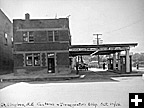
The Great Depression caused a rise in unemployment and a large surplus of unsold farm products. To protect the country, on August 14, 1930 the government passed restrictions on immigration that allowed only certain people into Canada: people from Great Britain, the United States and other self-governing dominions (like Canada); the wives and unmarried children under 18 years of age of people already living in Canada; and farmers with enough money to start farming in Canada. In 1935, only 11,277 immigrants arrived in the country, compared with 166,783 in 1928, before the stock market crash.
In 1935, the population was almost 11 million people, with the largest number of people living in Ontario, at 3.6 million, and the smallest in Yukon, at 4,000.
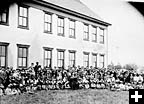
In 1931, Roman Catholics were the largest religious body in Canada, with 4 million people. Following it were the United Church of Canada (including Methodists, Congregationalists and Presbyterians), with 2 million; the Anglican Church, with nearly 2 million; and the Presbyterian Church, with approximately 870,000. The Canada Year Book 1936 reported that “of the non-Christian sects, 155,614 or 1.50% were Jews, 24,087 or 0.23% were Confucians, 15,784 or 0.15% were Buddhists and 5,008 or 0.05% were pagans.”
Tuning in
In the 1930s, Canadians could listen to A Fact a Day About Canada, a two- minute, popular radio program featuring miscellaneous statistics about the country, provided by the Dominion Bureau of Statistics. By 1935 there were 815,124 wireless and radio stations in the country, up from the 524,582 stations in 1931.
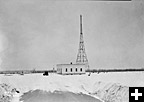
By 1934, 1.2 million telephones were used in Canada, down from the 1.4 million in 1930.
Cars were becoming more popular. By 1934, there were 1,129,532 vehicles registered in Canada, up slightly from the 1,083,178 registered in 1933. The increase in the popularity of cars spurred construction, as “the growth of motor vehicle traffic during and since the War has greatly stimulated the movement for increased and improved road construction.” By December 31, 1935, there were 409,269 miles of Canadian highways open for automobile travel.
A sombre economic state
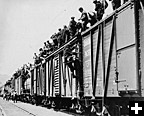
By 1933, almost 30% of the labour force in Canada was unemployed and one in five Canadians was seeking some form of government relief from the worsening situation. By 1935, 498,466 men had applied for jobs, but only 268,300 jobs were available through Canada’s Employment Service and just 265,212 men received a position. The situation was similar for women—in 1935, 157,955 applied for jobs, 108,274 jobs were available and 88,590 received a position.
The value of both exports to and imports from other countries fell dramatically. Whereas imports to Canada in 1929 were worth $36 billion, their worth dropped to $12 billion in 1934. Canada’s exports fared no better. Worth $33 billion in 1929, their worth dropped to $11 billion in 1934.
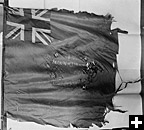
Canada’s leading domestic exports followed the same trend. Wheat, worth $215 million in 1930, was worth only $132 million in 1935. Newsprint paper, worth $145 million in 1930, was worth $82 million in 1935.
In our defence
By 1935, the permanent and non-permanent a ctive militia in Canada had grown to 137,716 people. The Royal Canadian Navy had “authorized [a] complement of 117 officers and 862 ratings.” As well, the strength of the Royal Canadian Air Force had grown to 1,285 permanent and non-permanent officers and airmen.
